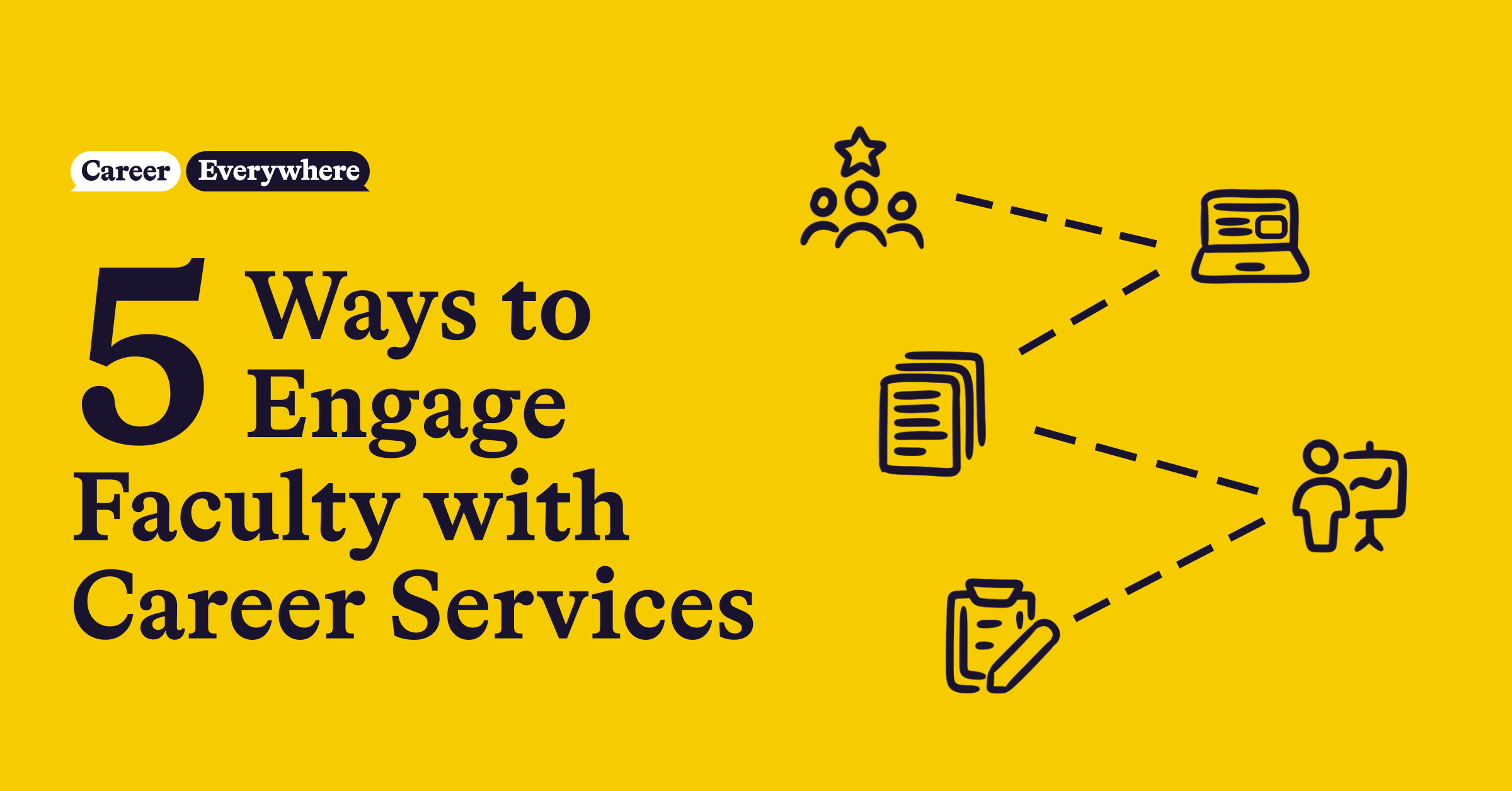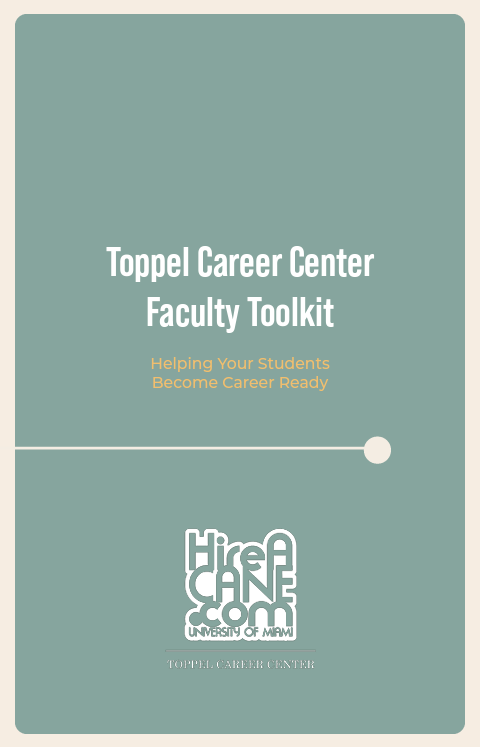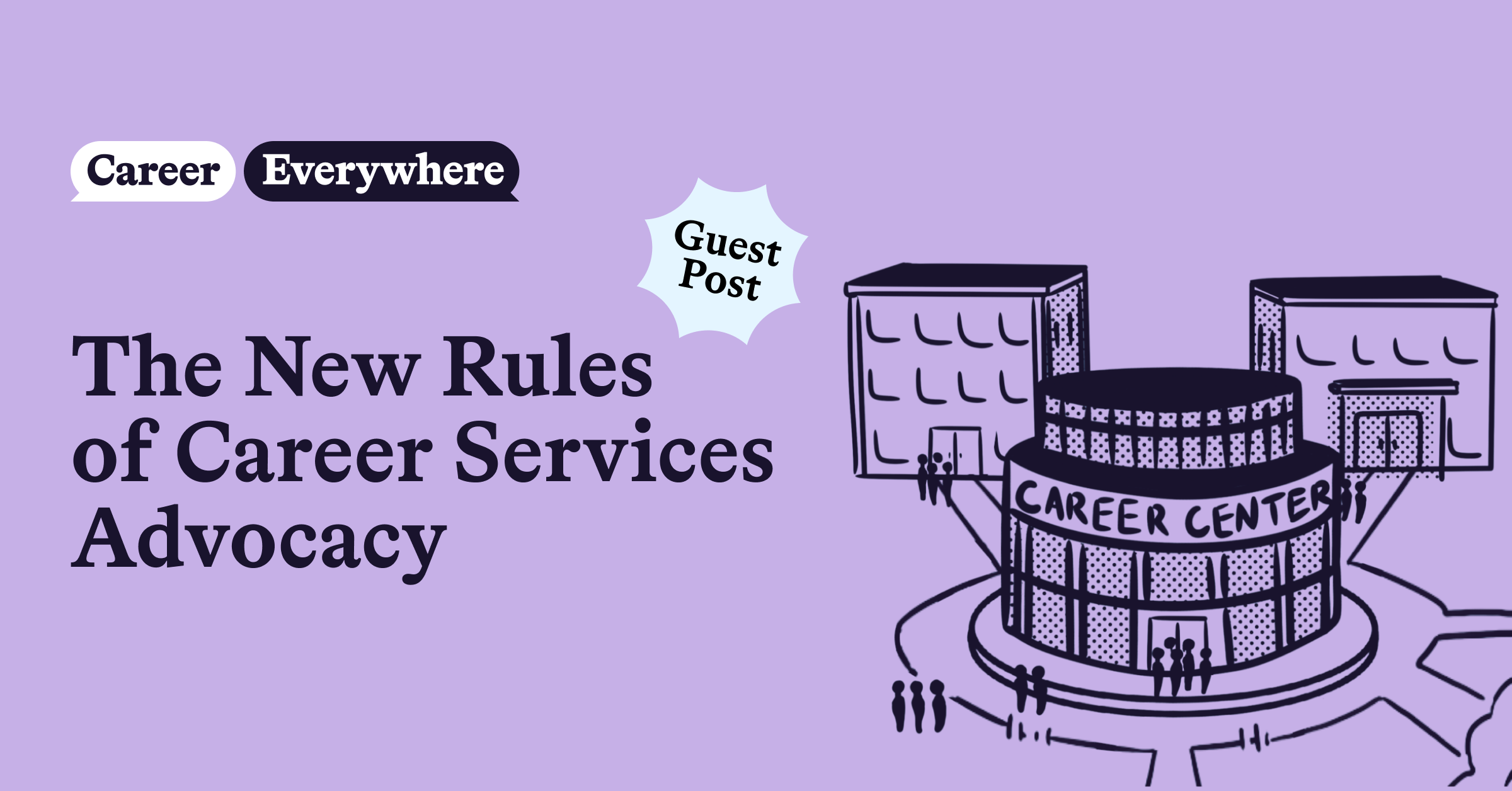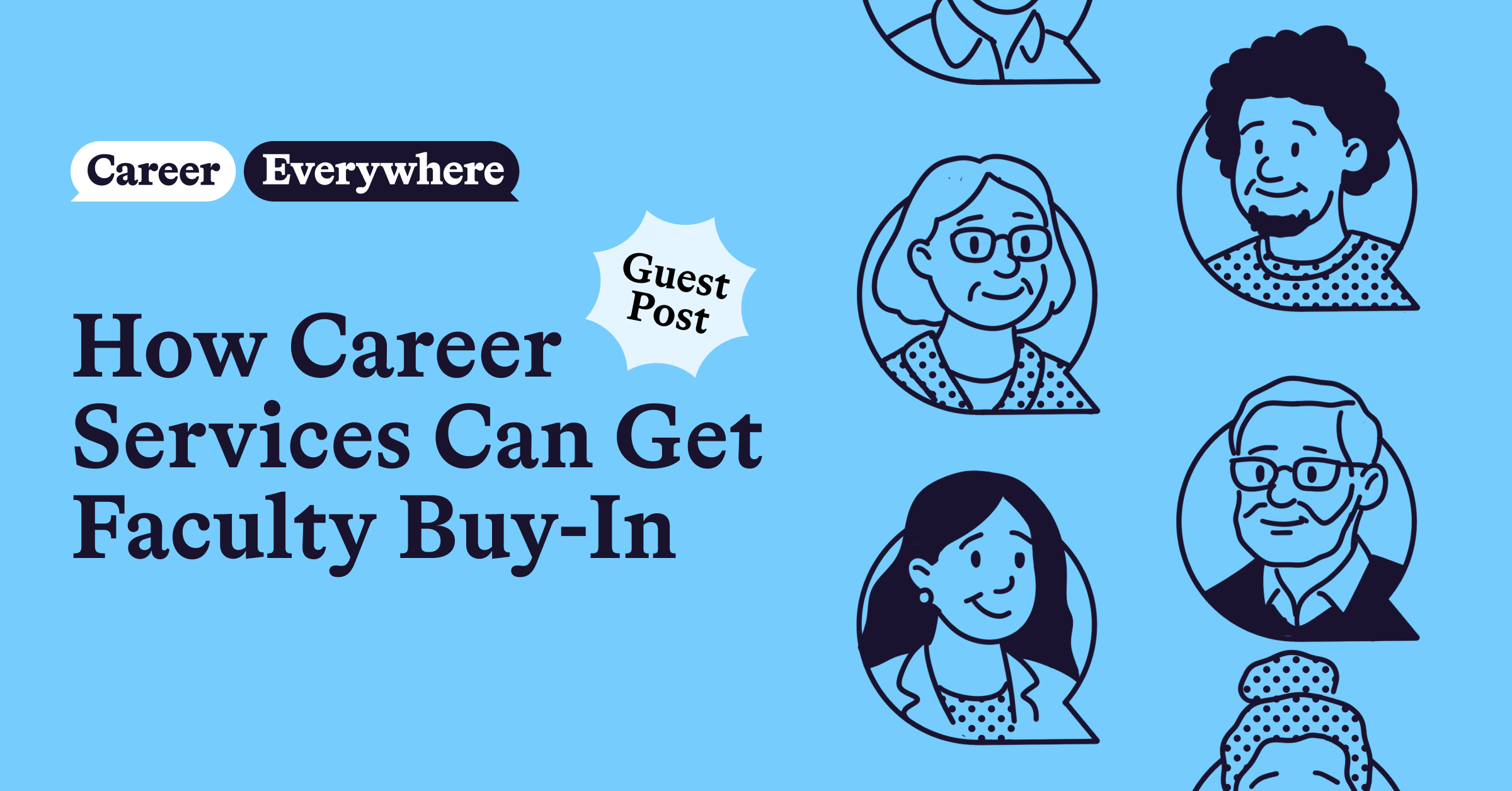
It’s no secret that engaging faculty with career services can be challenging. They are typically extremely busy and often focused on other things like curriculum planning, teaching, research, etc.
However, faculty can be one of career services’ biggest allies in the goal of getting students career ready. After all, many students turn to their professors for career guidance instead of going to the career center.
Typically, the greatest barriers to getting faculty involved with career services are a lack of time and a lack of understanding about what the career center does (or the resources they offer). In this article, we’ll review five different strategies career centers around the country have used to engage faculty, introduce them to career resources, and enable them to have meaningful career conversations with students:
- Build a Career Champion program
- Build out a resources webpage specific to faculty
- Create and distribute a faculty toolkit
- Introduce faculty to career resources with a 45-minute presentation
- Partner with faculty to embed career assignments into curriculum
1. Build a Career Champion program
If there’s anyone who knows how to build a Career Champion program, it’s Nancy Bilmes at the University of Connecticut. Over the last four years, Bilmes and her career services team have built a robust Career Champion program and trained over 500 faculty, staff, alumni, and employers on how to have better career conversations with students.
When Career Champions sign up, they receive access to several virtual training sessions a month, career center staff, monthly newsletters, and other helpful content and resources to empower them to have more detailed career conversations with students. UConn’s Center for Career Development also hosts an annual in-person conference for Career Champions every Fall semester.
“We knew that students were having these conversations already, and we wanted to help prepare our faculty and staff with resources they could share with students, including current trends in career data, information about our department, and more,” said Bilmes, Director of the Center for Career Development at UConn.
“We don’t expect our Career Champions to be career advisors. We just expect them to read our newsletters and/or attend our training sessions where we’ll talk to them about the value of Handshake, the value of our website, etc. so they can refer students. That way, if they don’t know the answer, they’ll know how to help students find that answer.”
In most cases, those answers can be found on UConn’s virtual career center (powered by uConnect). The site includes everything from labor market insights and career outcomes data, to jobs and internships, industry guides, videos, advice blogs, and more. And all of that info is curated in community pages for different career interests and identity/affinity groups. As a result, the virtual career center is the perfect resource for Career Champions to learn from and refer students to.
All other resources specific to Career Champions, many of whom are faculty members, can be found on the Career Champion resource page on UConn’s virtual career center.
For more details about UConn’s Career Champion program, check out Bilmes’ episode of the Career Everywhere podcast.
2. Build a resources webpage specific to faculty members
Speaking of resource pages, you don’t have to have a Career Champion program to build a webpage specifically for faculty members full of career center resources. In fact, that’s one of the newest faculty-engagement strategies for Christian Garcia and his team at the University of Miami Toppel Career Center.
Inspired by UConn’s Career Champion resource page, Garcia and his team built out their own version, the Faculty and Staff Engagement Hub. Powered by uConnect, the Hub includes resources supporting faculty and staff who are interested in staying up-to-date with career events, integrating career readiness into their coursework, and learning about where Miami’s graduating students have launched their careers.
Those resources include events for Miami’s Career Champion program, a list of the top career resources for students, faculty and staff mentors (with a call-to-action to get involved as a mentor), labor market insights, career and industry guides, virtual experiences and job simulations from Forage, and more.
Essentially, the goal is for faculty to gain a firmer understanding of what the Toppel Career Center offers and what resources are available so they can refer students to those resources.
“We created the Hub to be a virtual meeting place for faculty and staff to connect with us and receive helpful information that can enhance the career conversations they are having both inside and outside of the classroom. We hope that through the Hub, we can showcase how easy it is to incorporate career into the curriculum and overall student experience at the University of Miami,” Garcia said.
For more details about the Faculty and Staff Engagement Hub and other strategies the University of Miami is implementing, check out Garcia’s episode of the Career Everywhere podcast.
3. Create and distribute a faculty toolkit
The University of Miami Toppel Career Center’s team motto is “Career services is everybody’s business.” As part of that mission, Garcia and his team recently created a faculty toolkit PDF to help them understand what the Toppel Career Center does, what resources they offer and where to find them, etc.
The toolkit lives on Toppel’s Faculty and Staff Engagement Hub webpage and includes:

- An overview of the career center
- What career readiness means (along with definitions of the NACE competencies)
- A list of ways faculty can partner with the career center to support students’ career development
- An email template faculty can use to communicate with students about Toppel’s resources
- A list of ideas for incorporating career readiness into syllabi, including syllabus statement templates, example assignments and activities, and example resources.
“This was born out of the idea of how do we get information into the hands of faculty members that will help them understand what career services is all about?” Garcia said. “The toolkit includes actual tried and true examples of the ways faculty can connect with us and engage with us.”
Garcia said he knew the toolkit didn’t need to be in a fancy format and that a well-designed PDF with live links would work well for faculty. Faculty members who prefer to print the PDF out can do that, while others who prefer the virtual version have that option, too. The most important thing was to communicate the information and examples in a clear, concise way.
“Faculty love data, they love information, but they’re also busy so you don’t want to overdo it,” Garcia said.
For more details about the Faculty Toolkit and other strategies the University of Miami is implementing, check out Garcia’s episode of the Career Everywhere podcast.
4. Present career resources directly to faculty (in just 45 minutes)
Knowing faculty have limited time, Laura Kestner-Ricketts, Executive Director of Career and Professional Development at Augustana College, created a 45-minute program that can introduce faculty to career resources in a scalable, efficient way.
During this presentation, Kestner-Ricketts trains faculty on how to navigate Augustana’s virtual career center (powered by uConnect) and use all of the resources. After only six months of running this program, Kestner-Ricketts says it’s a hit with faculty (and students, as it can easily be adapted for them) due to its interactive, engaging format.
Here’s a general outline of the presentation:
- Laura introduces faculty to the website and briefly highlights each heading and drop-down menu.
- Then she shows them how to access each of the website’s six signature resources, including identity/affinity communities, labor market insights, Candid Career videos, mentors, first destination outcomes, and more.
- Next, Laura breaks attendees into groups of six.
- Each member of the group has four minutes to research one of the six signature resources. They’re encouraged to take notes.
- Next, Laura invites attendees to get into groups with people who researched the same signature resource.
- They have four minutes to share what they learned, hear what others have learned, and solidify their knowledge of that resource.
- Attendees then get back into their original groups.
- Each person has two minutes to share what they learned about their resource:
- Who could benefit from using it
- What the resource is and what it can do
- When it might be helpful to suggest or share with a student (advising, in class, individually, group, etc.)
- Where to access it
- How to navigate it
- Why someone might find it helpful
- After 12 minutes (two minutes for each person), Laura brings everyone together to debrief.
Kestner-Ricketts can train dozens of faculty members at a time, and the program is infinitely scalable. In her mind, it’s all about starting a conversation.
“When we say Career Everywhere, we are really talking about career conversations everywhere. And this [program] is a great way to start a conversation,” Kestner-Ricketts said.
Kestner-Ricketts made the outline for her presentation available here. You can also learn more in her episode of the Career Everywhere podcast.
5. Partner with faculty to embed career assignments into curriculum
Convincing faculty to include career-related assignments into their curriculum is easier said than done, but that didn’t stop Gene Rhee and Jessica Best of University of Oregon’s Lundquist College of Business Mohr Career Services.
Over the last several years, the dynamic duo has partnered with faculty to add career-related assignments to three core business classes. The assignments, all asynchronous and requiring no live class time (a pro for faculty!), are sprinkled throughout:
- BA 101: Introduction to Business (a freshman-level class)
- BA 240: Spreadsheet Analysis and Visualization (a sophomore-level class)
- Marketing 311: Marketing Management (an upper-division class)
That way, by the time business students reach their senior year, they’ve already been exposed to career services multiple times. And because the assignments are part of their grade in three required classes, every student gets the opportunity to learn more about the career center and what resources are available.
Best says about 90% of students engage with the career assignments, a massive increase from the 20% engagement rate they were previously seeing through their event and advising-focused strategies. Plus, her team frequently surveys the students to get their feedback on the program and track their progress. And the best part? Career services handles all the grading so faculty don’t have to add that to their already-full plates.
Check out Rhee and Best’s episode on the Career Everywhere podcast to learn more about what the assignments look like, how (and why) they built the program, how they got buy-in, and more.
Conclusion
Faculty can be valuable partners to career services, especially when it comes to offering career guidance to students—who may be more likely to seek it from faculty than from the career center. The first step is to build relationships with those faculty members and educate them on what resources your team offers.
If you’d like to learn more about how uConnect can help you engage faculty, fill out the form below to schedule a demo.


